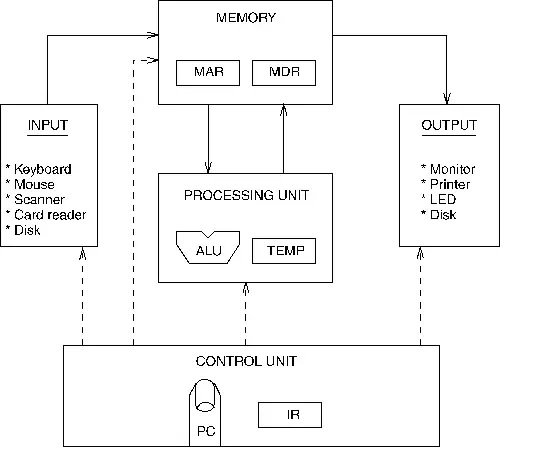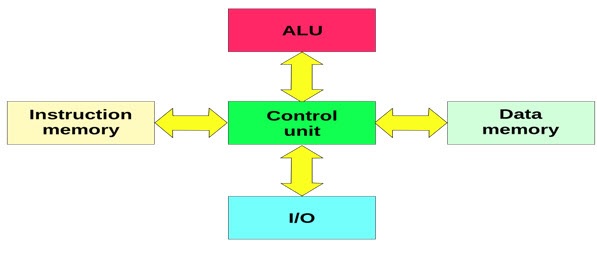Fundamentals of computer organisation and architecture
Contents
3 Box Model
Processor
Main Memory
I/O
extended model with split I/O
System Bus
Control Bus
Address Bus
Data Bus
Stored Program Concept
von Neumann Architecture
von Neumann Architecture is a type of computer architecture, based on the design created by John von Neumann in 1945.
Computer systems that use von Neumann Architecture contain three main components; the central processing unit (CPU), memory, and input/output devices (I/O), which are all connected together using the system bus.
The memory stores the information (data/program). The processing unit handles computation/processing of information. The Input receives the information from input devices such as mouse and keyboard. The Output sends information out to devices such as the monitor or printer. The Control unit endures that the other components are performing their tasks correctly.
Harvard Architecture
Harvard Architecture is a type of computer architecture based on the Harvard Mark 1 relay-based computer, which stored instructions on punched tape and data in electro-mechanical counters.
Computer systems that use Harvard Architecture have their memory split into two parts. One part of the memory is used for data storage and handling, while the other half is used to run programs. Each part of the memory is accessed with a different bus, meaning the central processing unit can fetch data and instructions at the same time. This also decreases the chance of a program corruption.
Harvard Architecture is sometimes used within the central processing unit to handle its catches, but it is used less with main memory because of its complexity and cost.

